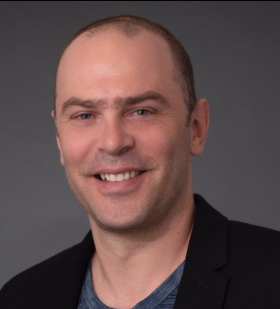
Bastien Guerin, Ph.D.
|
Assistant Professor of Radiology Harvard Medical School |
|
Investigator, Associate Rad Rsch MART 32 MO NE, Mass General Research Institute |
Research Interests
Research Narrative
Parallel transmission methododology development:
One of my research interests is the development of basic metholodogy for ultra-high field MRI using parallel transmission (pTx). Until now, I have mainly been working on developing radio-frequency pulse design strategies for management of the specific absorption rate (SAR) and am moving toward validation of these techniques on our 7 T pTx system using temperature-sensitive contrast agents and phantoms.
I am also working on integrating pTx in routine sequences at 7 T to produce superior image quality for a whole range of imaging protocols. All this work is on-going.
Applications of parallel transmission:
Almost any sequence can benefit from the additional degrees-of-freedom provided by pTx at ultra-high fields. Mainly, the use of spokes pulses can significantly reduce the non-uniform contrast that affect 7 T images of the head, which is due to the so-called dielectric resonance" effect. The SAR reduction capabilities of pTx also offer interesting application opportunities.
For example, the ability to produce high quality images while lowering SAR, especially local SAR, can be used to image patients with conductive implants.
By allowing to safely scan patients with active brain implants such as deep brain stimulators (DBS), SAR reduction with pTx could help shed important light on the mechanisms of action of DBS in-vivo.
Electromagnetic simulation of MRI systems:
Another interest is the optimization and assessment of current hardware technologies used for transmission and reception of the MR signal using electromagnetic simulations. Using FEM electromagnetic simulations, I have recently shown that pTx coils with increasing number of channels have a better ability not only to create uniform flip-angle excitations at high field, but also to decrease global and local SAR.
I believe that this result give a clear incentive to increase the channel count in pTx, exactly like the search for greater SNR has motivated the development of highly parallel receive arrays. A serious difficulty associated with increasing the number of degrees-of-freedom of pTx coils is the greater difficulty to manage mutual coupling between transmit elements.
One of my collaborators, Zohaib Mahmood (EECS, MIT), is working on what we believe is a very flexible and scalable solution to this problem. The idea is to interface the coil array and the power amplifiers with a lossless matrix specifically designed using an optimization procedure in order to match the coil impedance on the input and present a perfectly decoupled output impedance (diagonal matrix of 50 Ohm). The matrix can be designed so that none of the transmit degrees-of-freedom are lost at the decoupled output.
I am also collaborating with Jorge Villena (EECS, MIT) and Thanos Polimeridis (EECS, MIT) on computation of mathematical bounds for the signal-to-noise ratio (SNR) and the specific absorption rate (SAR) in non-uniform, voxelized human body models.
Until now, the ultimate SNR (uSNR) and ultimate SAR (uSAR) could only be computed in uniform spheres and cylinders, which made these metrics of little use for the performance evaluation of receive and transmit arrays that are designed to closely fit the region of the body being imaged. '
Our approach makes use of a ultra-fast volume integral equation solver (VIE) for MRI recently developed by Thanos Polimeridis that allows computation of scattered electromagnetic fields in a voxelized description of the body within seconds.
One of my hopes is that ultimate performance metrics such as the uSNR and uSAR computed in widely available voxelized body models will become standard performance benchmarks for the comparison of different receive and transmit technologies.
This would considerably simplify the determination of the "best" technological innovations in RF hardware.
